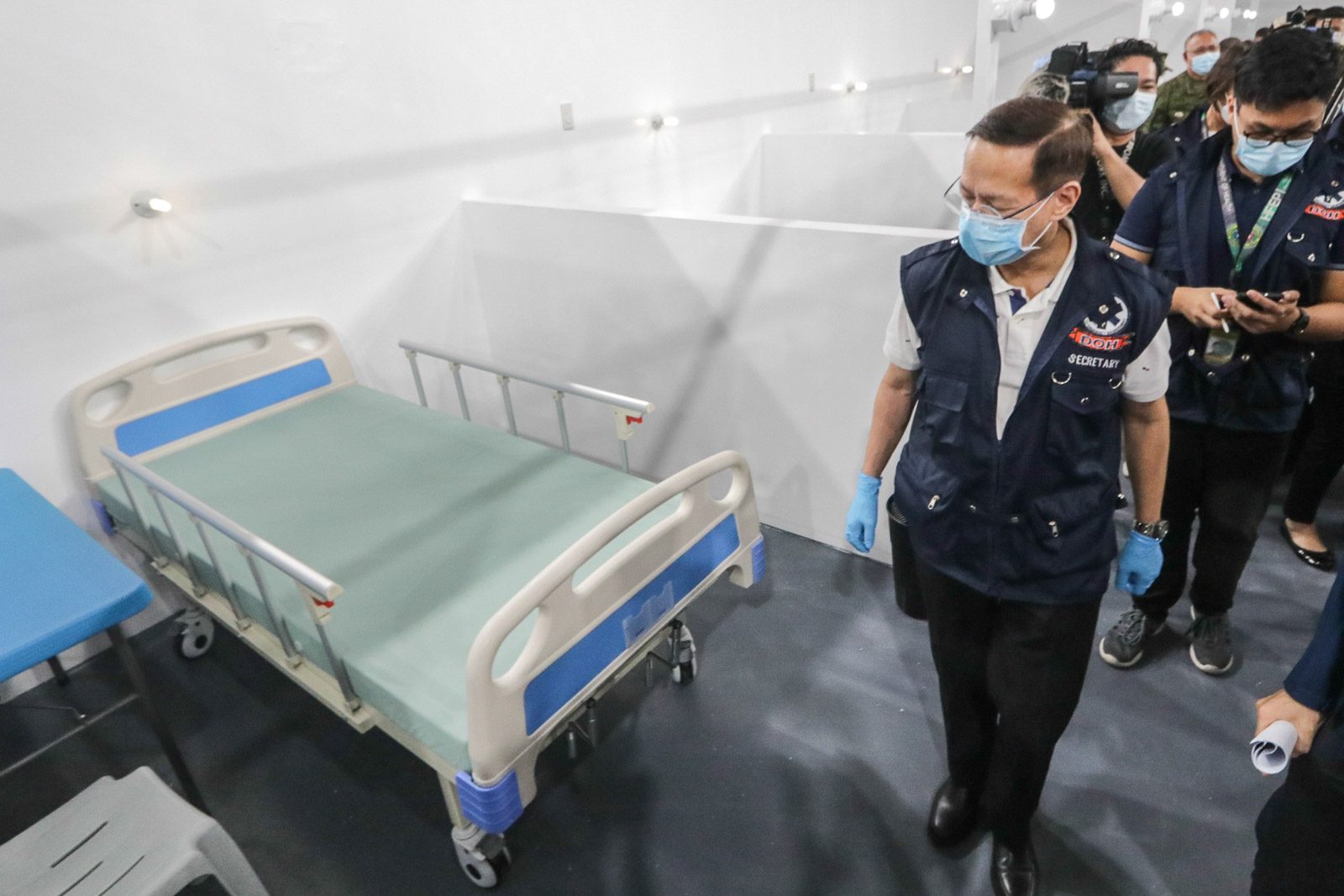SUMMARY
This is AI generated summarization, which may have errors. For context, always refer to the full article.

MANILA, Philippines – No more persons under monitoring (PUM) or persons under investigation (PUI), as the Department of Health (DOH) switches to new categorizations of coronavirus cases prescribed earlier by the World Health Organization (WHO).
Recent developments and new information on the coronavirus pandemic require the government to regularly revisit and update the case definitions and surveillance system for notification of COVID-19, said Health Secretary Francisco Duque III in a revised administrative order issued on April 9, Thursday.
The new categories or “case definitions for notification” were based on guidelines issued by the WHO on March 20. They are:
- Suspect case
- Probable case
- Confirmed case
Suspect case
The following may be considered a “suspect case” of COVID-19:
- A person with severe acute respiratory illness – fever of 38°C or higher, cough or sore throat, shortness of breath, and may even include severe pneumonia – whose cause is undetermined prior to testing for the coronavirus.
- A person with influenza-like illness – fever of 38°C or higher, and cough or sore throat – and who lives in or has traveled to an area that reported local transmission of the coronavirus during the 14 days prior to the onset of symptoms.
- A person with influenza-like illness and has had contact with a confirmed or probable case (see definition of “probable case”) of COVID-19 in the two days prior to the onset of that confirmed/probable case’s illness or before that confirmed/probable case showed negative on repeat testing.
- A person with fever or cough or shortness of breath or other respiratory symptoms and is one of the following: 60 years old or older; with a comorbidity or pre-existing illness; in high-risk pregnancy; a health worker.
Probable case
A “probable case” of COVID 19 is:
- A suspect case who has been tested for COVID-19 but the results are inconclusive.
- A suspect case who has tested positive for COVID-19 but the test was not conducted in a national or subnational coronavirus reference laboratory, or an officially accredited laboratory for confirmatory testing.
Confirmed case
A person may be considered a “confirmed case” of COVID-19 only if they were tested at a national or subnational reference laboratory, or at a DOH-certified laboratory testing facility.
This is regardless of whether the person shows clinical signs and symptoms of COVID-19.
How about PUMs?
The new categories stated above only cover what used to be called PUIs and confirmed cases of the coronavirus. What used to be considered PUMs – those who have had contact with confirmed cases or have traveled to areas with local transmissions of the virus but who show no symptoms – are no longer covered by the new classification.
The new categories will become the basis of “notification” about possible COVID-19 cases. Unlike the previous system, they do not take into account people who may have been exposed to the virus but do not show any symptoms.
The procedures prescribed in the DOH administrative order only deal with suspect, probable, and confirmed cases.
In a footnote, the DOH explains why PUMs are not included in the new classification: “Because of evidence of local or community transmission in the country, its residents are assumed to have been exposed to the infection.”
WHO defines ‘contact’
The WHO’s “case definitions for surveillance” includes all 3 categories – suspect, probable, confirmed case – and notes a 4th one: contact.
A ‘contact’ is a person who had any one of the following exposures during the two days before and the 14 days after the onset of symptoms of a probable or confirmed case:
- Face-to-face contact with a probable or confirmed case within 1 meter and for more than 15 minutes.
- Direct physical contact with probable or confirmed case.
- Direct care for a patient with probable or confirmed COVID-19 without using proper personal protective equipment.
- Other situations as indicated by local risk assessments.
In the case of confirmed asymptomatic cases, the period of contact is measured from the 2 days before the date on which the person’s testing sample was taken, and all through the succeeding 14 days.
Cases still on the rise
The National Task Force (NTF) against COVID-19 earlier said it would begin “massive testing” of PUIs and PUMs as it opens large-venue national quarantine facilities in different parts of the country.
The objective then was to confirm more cases and trace their contacts in order to isolate them in these facilities in order to prevent the virus from spreading further among their communities.
It remains to be seen whether the NTF would adjust its plan according to the DOH’s new classification of cases.
On Saturday, April 11, the DOH reported 233 new confirmed COVID-19 cases, bringing the national total to 4,428 confirmed cases. Twenty-six new recorded fatalities brought the death toll to 247, while 157 patients have recovered.
Health experts expect the number of coronavirus cases in the Philippines to peak between 26,000 and 75,000. A study by the University of the Philippines projected cases could reach up to 550,000 in Metro Manila alone, peaking sometime from the end of April to June. – Rappler.com
Add a comment
How does this make you feel?
There are no comments yet. Add your comment to start the conversation.